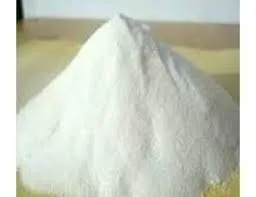
Nov . 07, 2024 12:52 Back to list
Properties and Applications of Methyl Hydroxyethyl Cellulose in Various Industries
Understanding Methyl Hydroxyethyl Cellulose A Versatile Polymer
Methyl Hydroxyethyl Cellulose (MHEC) is a non-ionic, water-soluble polymer derived from cellulose, a natural polymer found in the cell walls of plants. This compound has become increasingly prominent in various industries due to its unique properties, making it an essential additive in many formulations, including construction materials, paints, personal care products, and pharmaceuticals.
Composition and Properties
MHEC is produced by chemically modifying cellulose through the introduction of methyl and hydroxyethyl groups. This modification enhances its solubility in cold water and provides unique rheological properties, which can be tailored by adjusting the degree of substitution and molecular weight during production. The resultant product possesses several key attributes it is non-toxic, biodegradable, and resistant to fermentation, making it an environmentally friendly choice compared to synthetic polymers.
One of the notable properties of MHEC is its thickening ability. When added to aqueous solutions, it can significantly increase viscosity without altering the solution's pH. This characteristic is particularly beneficial in applications where control over fluid dynamics is essential, such as in cementitious materials and adhesives. Furthermore, MHEC exhibits shear-thinning behavior, meaning that its viscosity decreases under shear stress, allowing for smoother application while retaining consistency when at rest.
Applications of MHEC
1. Construction Industry MHEC is commonly used as a thickening agent in tile adhesives, plasters, and renders. Its ability to enhance the workability of these materials while increasing their adhesion properties makes it invaluable in construction applications. MHEC also offers improved water retention, preventing the premature drying of materials, which is crucial for achieving optimal bonding strength.
2. Paints and Coatings In the paint industry, MHEC acts as a rheology modifier, helping to stabilize the formulation and improve the ease of application. It allows for the production of high-quality paints with consistent viscosity that can adhere well to various surfaces. Additionally, MHEC contributes to the leveling properties of paints, reducing the appearance of brush marks and ensuring a smooth finish.
methylhydroxyethyl cellulose

3. Personal Care Products MHEC is also a popular ingredient in personal care and cosmetic products, such as shampoos, conditioners, lotions, and creams. Its thickening and emulsifying properties enhance product texture and stability. Furthermore, it helps to improve the sensory attributes of formulations, offering a pleasant feel upon application.
4. Pharmaceuticals In the pharmaceutical sector, MHEC serves as a binder and thickener in tablet formulations and liquid medications. It can control the release of active ingredients, contributing to the development of sustained-release formulations. Its biocompatibility and non-toxic nature make it suitable for various pharmaceutical applications, ensuring that it meets the stringent standards of this industry.
Future Perspectives
The versatility of MHEC places it in a favorable position for future growth across different sectors. With the increasing demand for eco-friendly and sustainable materials, the ongoing development of biopolymers like MHEC is likely to rise. Researchers are continually exploring new applications and modifications of MHEC to enhance its properties further, which may lead to innovative solutions in areas such as food technology, agriculture, and environmental remediation.
Additionally, given the global emphasis on sustainability, the exploration of MHEC as a replacement for synthetic additives will become more relevant. Its natural origins and biodegradability make it suitable for applications aimed at reducing environmental impact.
Conclusion
In summary, Methyl Hydroxyethyl Cellulose is a multifunctional polymer with diverse applications across various sectors. Its unique properties—such as water solubility, thickening ability, and shear-thinning behavior—make it an invaluable additive in construction, paints, personal care, and pharmaceuticals. As industries continue to pivot towards sustainability and eco-friendly materials, MHEC is well-positioned to contribute to greener alternatives while delivering performance and versatility. The ongoing research into its applications and modifications promises exciting developments in the years to come, solidifying MHEC's role as a vital component in modern formulations.
-
Versatile Hpmc Uses in Different Industries
NewsJun.19,2025
-
Redispersible Powder's Role in Enhancing Durability of Construction Products
NewsJun.19,2025
-
Hydroxyethyl Cellulose Applications Driving Green Industrial Processes
NewsJun.19,2025
-
Exploring Different Redispersible Polymer Powder
NewsJun.19,2025
-
Choosing the Right Mortar Bonding Agent
NewsJun.19,2025
-
Applications and Significance of China Hpmc in Modern Industries
NewsJun.19,2025







